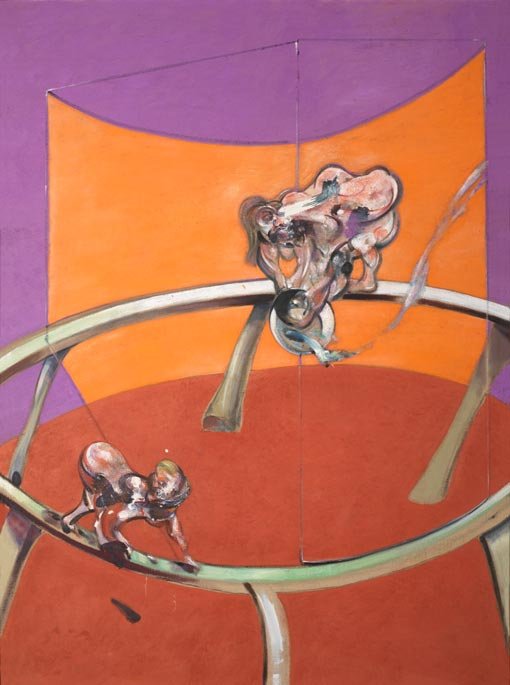1960s

In trying to do a portrait, my ideal would really be just to pick up a handful of paint and throw it at the canvas and hope that the portrait was there.
- Francis Bacon
Bacon moved into a studio in Reece Mews, South Kensington in 1961 and he lived and worked there until the end of his life. The studio was also home to his vast and chaotic accumulation of source material for his paintings, now preserved in its entirety in Dublin City Gallery The Hugh Lane.
In 1963 Bacon met George Dyer, his lover for the rest of the decade. He began making portraits of Dyer and his friends from the Soho scene: Isabel Rawsthorne, Muriel Belcher, Henrietta Moraes and the artist Lucian Freud. Many of these portraits were based on photographs Bacon commissioned from John Deakin.
In this period – and perhaps in line with the lively atmosphere of London in the sixties – Bacon’s compositions became more daring. He began to use areas of flat, high-key colour to frame and isolate his figures, and painted portraits on a smaller scale. These portraits are among his most adventurous works, conveying a distinct likeness with thick twists of paint which seem to consist of only a few wild strokes and turns of the brush.